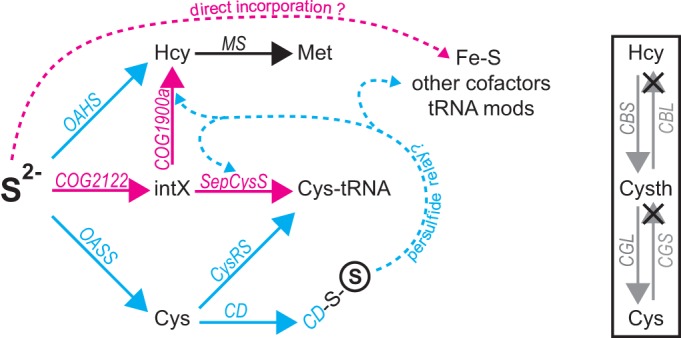FIG 1.

(Left) Model for sulfur assimilation. In M. acetivorans, the biosynthesis of cysteine and homocysteine is facilitated by a combination of methanogen-type (pink), universal (black), and conventional-type (blue) enzymes. Although the conventional-type enzymes found in most aerobes are often absent from other methanogens, those depicted here were presumably acquired by lateral gene transfer and are present in M. acetivorans. Sulfane (circled S) is relayed as persulfide (dashed arrows) between proteins to support the biosynthesis of cofactors and tRNA modifications. Catalysis by SepCysS and COG1900a may also proceed by a persulfide-dependent mechanism. COG2122 may be required for the biosynthesis of a yet-unidentified sulfur-containing metabolic intermediate (intX) of Cys-tRNA and homocysteine biosynthesis (see the text). MS, methionine synthase. (Right) Schematic depiction of transsulfuration pathways for interconversion of Cys and Hcy through the cystathionine (Cysth) intermediate. CBS, cystathionine β-synthase; CBL, cystathionine β-lyase; CGL, cystathionine γ-lyase; CGS, cystathionine γ-synthase. × indicates that the Cys-to-Hcy pathway is not present in M. acetivorans. The Hcy-to-Cys pathway may be present. See the text for details.
